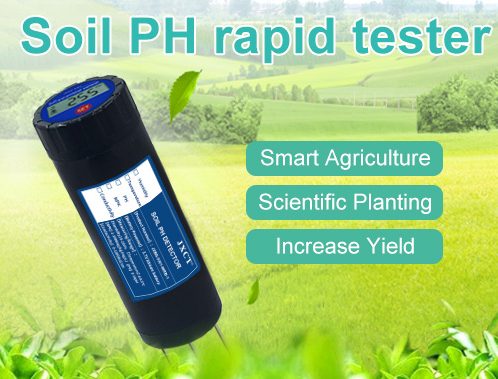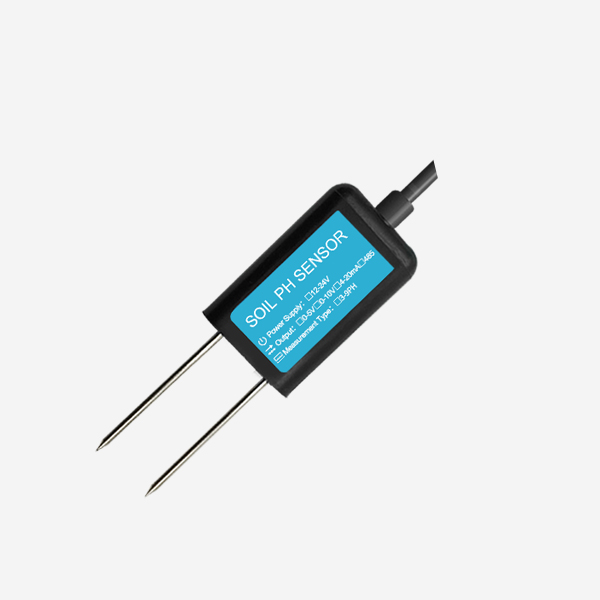Soil pH sensor plays a crucial role in determining the availability of nutrients to plants, as well as their ability to absorb them. Therefore, monitoring soil pH levels regularly is essential for farmers and agriculturists who want to optimize their crop yields.

In this paper, we will discuss the importance of soil pH monitoring in agriculture, its impact on crop yield, and various methods for measuring soil pH. We will also explore some of the challenges faced by farmers in maintaining optimal soil pH levels and suggest potential solutions to overcome these obstacles.
Body:
The Importance of Soil pH sensor in Agriculture
Soil pH affects the availability of nutrients to plants, which can have a significant impact on their growth and development. If the pH level is too high or too low, certain nutrients may become less available to plants, leading to nutrient deficiencies and reduced crop yields. For example, if the soil pH is too acidic (below 6), essential nutrients like phosphorus, potassium, calcium, and magnesium may be less accessible to plants. On the other hand, if the soil pH is too basic (above 8), micronutrients such as iron, manganese, zinc, and copper may become less available.

Monitoring soil pH levels regularly allows farmers to make informed decisions about fertilization and soil management practices, thereby maximizing crop yields and reducing production costs. Regular testing can also help identify any changes in soil pH over time, allowing farmers to take corrective measures before problems arise.
The Impact of Soil pH on Crop Yield
The relationship between soil pH and crop yield is complex, but it is widely accepted that optimal soil pH levels lead to better plant growth and higher yields. This is because plants require specific nutrients in varying quantities throughout their lifecycle, and soil pH directly affects the availability of these nutrients. Studies have shown that even small changes in soil pH can significantly impact crop yields. For example, a study conducted by researchers at the University of Florida found that a decrease in soil pH from 6.5 to 5.5 resulted in a 30% reduction in corn yields.
Moreover, different crops have different requirements when it comes to soil pH. Some crops, such as blueberries and azaleas, thrive in acidic soils, while others, such as potatoes and tomatoes, prefer more alkaline conditions. Therefore, it is important for farmers to understand the pH preferences of the crops they grow and monitor soil pH accordingly.
Methods for Measuring Soil pH
There are several methods for measuring soil pH, including laboratory tests, portable meters, and soil test kits. Laboratory tests provide the most accurate results, but they can be expensive and time-consuming. Portable meters are convenient and relatively inexpensive, but they may not always give accurate readings. Soil test kits are affordable and easy to use, but they may not provide the same level of accuracy as laboratory tests.

Farmers should choose the method that best suits their needs based on factors such as cost, convenience, and accuracy. They should also consider the type of soil they are working with, as different types of soil may require different methods of measurement.
Challenges Faced in Maintaining Optimal Soil pH Levels
Maintaining optimal soil pH levels can be challenging for farmers due to several factors, including weather, climate change, and natural variations in soil chemistry. Rainfall, for example, can cause fluctuations in soil pH levels, particularly in regions with high annual rainfall. Climate change is also affecting soil pH levels, with studies showing that rising temperatures and carbon dioxide levels are making soils more acidic.
Another challenge facing farmers is the increasing cost of fertilizers and other inputs required to maintain optimal soil pH levels. In many cases, these inputs are becoming prohibitively expensive, forcing farmers to cut corners or forego critical practices that could improve soil health and increase crop yields.
Finally, there is often a lack of awareness among farmers about the importance of soil pH monitoring and the techniques available for doing so. This can lead to poor decision-making and reduced crop yields.
Potential Solutions to Overcome These Obstacles
To overcome these obstacles, there is a need for increased education and outreach efforts aimed at raising awareness among farmers about the importance of soil pH monitoring and the techniques available for doing so. Governments and non-profit organizations can play an important role in this regard by providing resources and training programs to farmers.
